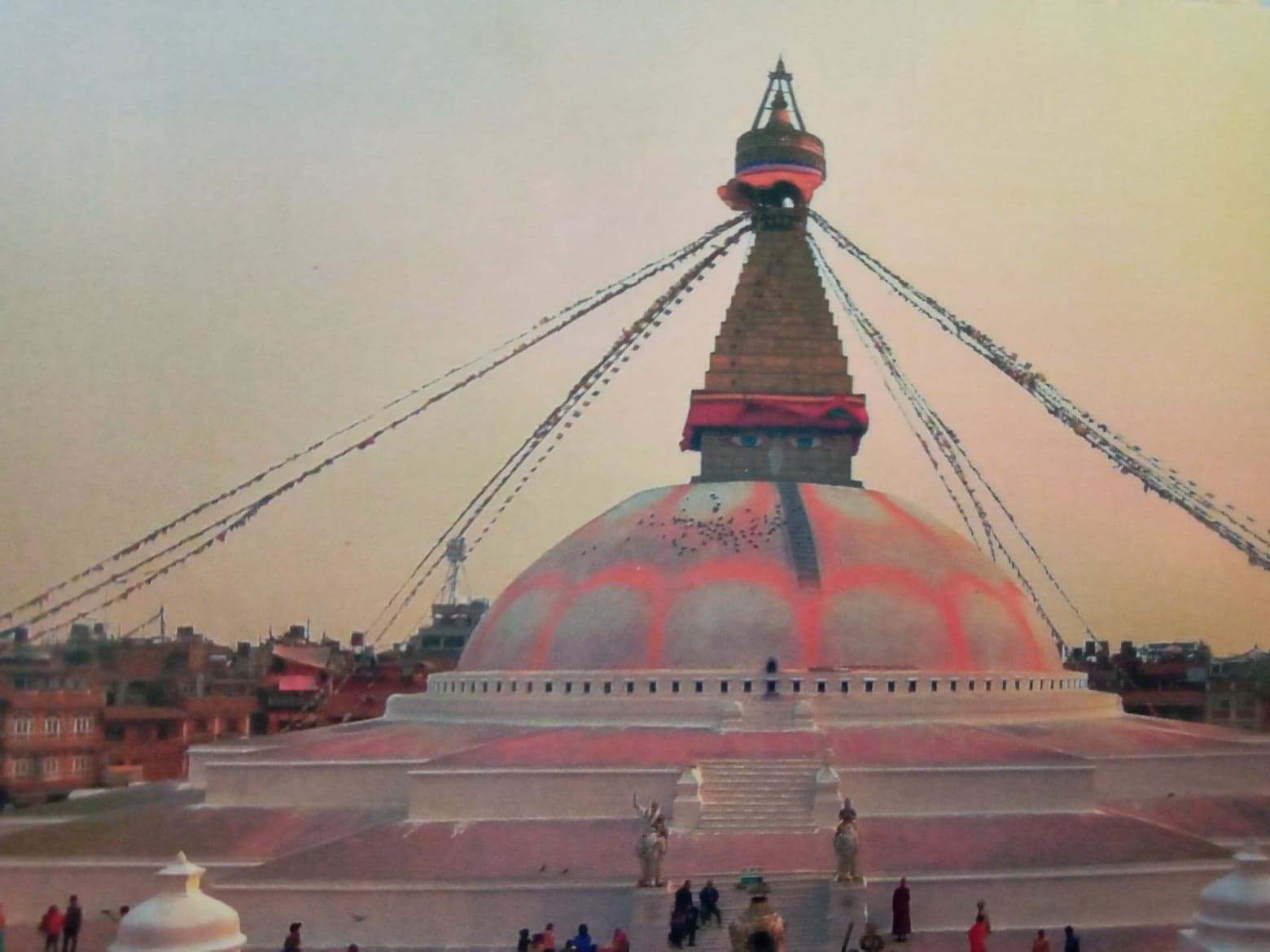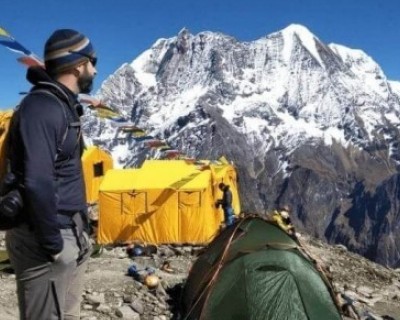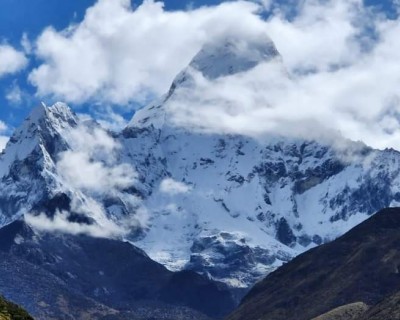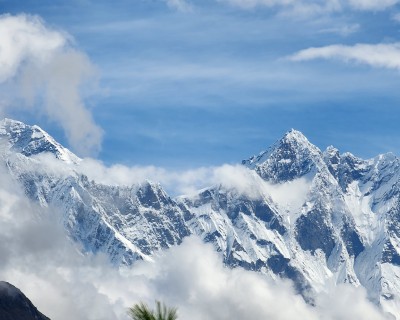Let's know about the UNESCO World Heritage sites of Nepal:
Pashupatinath
The Pashupatinath Temple is a famous and sacred temple of Hindus located on the bank of the Bagmati Rivers located around 5 km northeast of the center of Kathmandu capital of Nepal. This beautiful temple complex was listed on the UNESCO World Heritage Sites list in 1979. You can see many collections of temples, ashrams, and images that have been built and collected over the centuries along the side of the sacred Bagmati rivers. This temple is also included as one of the seven monuments around in UNESCO's designation of Kathmandu Valley.
It is believed that the Temples were created in the century by the Liccchavi Kings Prachanda Dev. Over time, many temples have been erected around.
The area of Pashupatinath covered the 518 temples and Monuments.
The temples and monuments inside the inner courtyard
- Vasukinath Temple
- Surya Narayan Temple
- Unmatta Bhaurava Temple
- Kirtimukha Bhaurava Shrine
- Hanuman Shrine
- Budhanilakantha shrine
- 184 Sivalinga shrine
Temples and Shrines in the outer complex
- Ram temple
- Virat Swaroop temples
- 12 Jyotirlinga and Pandra Shivalaya
- Guhyeshwari temple
The main temples in the Pashupatinath are built in the Nepalese pagoda style of architecture like a cubic construction, beautifully carved wooden rafters, and rest Tundal. The two-level roofs are of gold and copper covering. The temples are made on a square platform with a height of around 23m 7 cm from the base to the top. Gajur.
There are many festivals celebrated in this temple throughout the years and thousands of people attend these festivals. Among these Maha Shiva Ratri and Teej is the most important festival. Teej is the most celebrated festival in this temple by the Hindu women for the long life, and happiness of their husbands, where the people believe that fasting the whole day will make strong bonds with their husbands, so these days, you will see the Pashupatinath temple with the biggest crowd.
Exploring these temples gives you the chance to know more about Nepali culture and festivals.
Pashupatinath is also one of the living cultural heritage sites in the world. it is the center of energy with the active participation of the people at all times of the day. You can also participate in the daily rituals of the temples to know more about them.
Boudhanath
Boudhnath is a stupa in the Kathmandu, valley located about 11 km far from the center of the Kathmandu valley-capital city.
Boudhanath is also one of the largest Stupa in the world which is built during the 5th century.in 1979, Boudhnath is listed in the UNESCO world heritage sites, along with the Pashupatinath and Swyombhunath, Boudhnath is one of the most popular tourists in Nepal.

The stupa is on the ancient route from Tibet which enters the Kathmandu valley crossing the village of Sankhu in the northeast corner and passes by the Boudhnath and small Boudhnath-Charumati stupa but now the trade is done through the Lalitpur, but due to the popularity and beauty their stupa is still in the heart of every people.
It is believed that the stupa was built during the 5th century.
You can see the structure of the Boudhnath is very similar to the main Sywombhunath stupa.
Visitors of all backgrounds can participate in the rituals here, you can spin the prayer flags that surround the monuments, and you can shop the Tibetan jewellery handicrafts,s and thangka. You can buy these things, you can enjoy the surrounding view enjoying the hot coffee sitting inside the café.
Boudhnath gives you the chance to explore and know more about the Buddhist culture, and their rituals, and get the opportunity to explore the beautiful heritage sites of UNESCO.
Boudhna also offers beautiful night views
Swayambhunath
A beautiful ancient religious complex standing at the top of a hill in the Kathmandu valley, in the west of the Kathmandu city. This stupa is probably the most sacred among the Buddhist pilgrimage sites. The sites consist of a stupa, a variety of shrines, and temples, which are preserved from the Licchavi periods. You will also see the Tibetan monasteries, museum, and library which were recently added.
.jpg)
The stupa is uniquely created by designing the Buddha's eyes and eyebrows. The nose is painted in the Devanagari script which is number one.
There are many shops, restaurants, and hotels around the stupa. You can see the site has two access, one is a long staircase leading directly to the main plait form of the temples in the east and another is a south-west entrance taking from the highways. Taking the east access meant you would be breathless and sweating as well as tired but would feel upon the biggest Vajra- a white dome of the stupa, at the top of which you can see the two giant Buddha eyes- like looking out over the peaceful valley.
You will see the four giant eyes of Buddha in the main stupa which represent wisdom and compassion. Above the pair of eyes, there are other eyes, which are known as the third eyes. It is believed that when the Buddha preaches, cosmic rays emanate from the third which acts as messages to the heavenly beings so that those who are interested in listening to the Buddha can come down. A curly symbol, which symbolizes the nose which is much similar to the question marks, in Nepali is used to figure out one, here it represents the unity of the things in the world as well as the only path to enlightenment through the teaching of the Buddha.
Swyombhunath Temple is also well known as the "Monkey Temples" cause you will see many monkeys around the stupa, temples, trees, and nearby.
Kathmandu Durbar Square
Kathmandu Durbar Square is one of the three Durbar Square in the Kathmandu Valley which is listed in the UNESCO world heritage sites. Kathmandu Durbar Square is also well known as Basantapur Durbar Square. Kathmandu Durbar Square is surrounded by spectacular architecture and vividly showcases the skills of the Newari artists as well as the craftsmen over several centuries.
Going back to history, the Kathmandu Durbar Square was the palace of the Malla and Shah kings who ruled the city over. Along with these places, you will also see the square surrounds quadrangles, revealing courtyards and the temples known as Hanuman Dhoka Durbar Square- a name derived from the statue of the hanuman-the monkey devotee of Lord Ram, which is at the entrance of the palace.
Surrounded by ancient statues, ponds, fountains also a series of courtyards such as Mohan Chowk, Sundari Chowk, and a few others, really Kathmandu Durbar Square is a religious site for spiritual seekers.
The palace is decorated with elaborately carved wooden windows and panels and houses the Kings Tribhuwan Memorials Museum and the Mahendra Museum.
Due to the natural causes and neglect, time and again the temples and the palaces have gone through the reconstruction. There are less than ten quadrangles, so the temples are being preserved as national sites and used as the museum, so only a few parts of the palaces are open for visitors and the temples are only open for the people of Hindu and Buddhist faiths.
Visiting here is very fruitful as you will get to know more about the ancient
The Living Goddess
The Living Goddess, Kumari Devi or Kumari is the young prepubescent girl who is worshipped as the manifestation of the divine female energy or Devi in the Hindu and Buddhist traditions.
Kumara is a young prepubescent girl who is selected from the Shakya caste from the Nepalese Newari community. The Kumari is worshipped by the Hindus of the country. There are several kumaris throughout Nepal, with some cities having several, they are well known as the Royal Kumari and live in the Kumari Ghar of Kathmandu, a palace in the center of the city.
It is believed that worshipping of the young girls (believed to be the goddess) represents the worship of the divine consciousness spread all over the creation. While the worship of an idol represents the worship and recognition of the supreme through inanimate materials, the worship of the human represents the veneration and recognition of the same supreme in conscious beings.
The goddess is said to have declared that she resides in all the female living beings in this universe. But while worshipping a goddess, only a young girl is chosen over a mature woman because of their inherent purity and chastity.
The selection process here is rigorous, they are generally chosen for one day and worshipped accordingly on certain festivals like Navaratri or Durga Puga. A kumara is believed to be the incarnation of Taleju. When her first menstruation begins, it is believed that the goddess vacates her body. Serious illness or the major loss of blood from an injury also causes a loss of dignity.
You can see the Kumari Tradition is only followed in some cities in Nepal like Kathmandu, Lalitpur, Bhaktapur, Sankhu, and Bungamati.
It is believed that getting one glimpse of Kumari will brighten your fortune, so many people with serious illnesses visit here.
Exploring here gives you the chance to know the unique traditions of Nepal.
Sagarmatha National Park
Sagarmatha National Park is a park that lies in the Himalayas of eastern Nepal. it covers around 1148 km2 in the Solukhumbu District and ranges from the altitude of 2,845 to 8,848 meters at the summit of Mt Everest (the world's highest mountain). Sagarmatha National Park shared its border with the Qomolangma National Nature Preserve of Tibet, Makalu Barun National Park, and Dudh Koshi rivers in the east and south.
.jpg)
Sagarmatha National Park was established in 1976 and became the country's first national park and was inscribed as a Natural World Heritage Site.
You will see the many wildlife with unique landscapes, and explore the unique flora and rare fauna. The forests in the subalpine consist of fir, Himalayan birch, and rhododendrons. At the elevation above 4,000-5,000 meters, you will see the forest of Rhododendrons, and above this misses and lichens grow. You will get to see more than 1,000 flora in this national park.
Sagarmatha National Park preserved 208 bird species 208 including Impeyan Pheasant, vulture, snowcock, bearded, and alpine chough if luck favors you, you can also see rare animals like Himalayan Thar, Himalayan Serow, Musk deer, snow leopard, and some Indian leopard roaming in the lower elevation.
The area is covered with dramatic mountains, glaciers, deep valleys, and the seven highest mountains other than Everest, home of the many rare birds and animals like a snow leopard, and red panda. Along with these, you will see the Sherpa people living within the park and combining nature and culture. Every Everest Region Trekking like Everest Base Camp Trek, Everest Gokyo Lake Trekking takes you through this national park.
Exploring here is worthwhile.
Chitwan National Park
Chitwan National Park is the most popular tourist destination and also one of the first national parks in Nepal which was established in 1973 and listed in the UNESCO World Heritage Sites. These parks cover an area of 952.63 km2 and are located in the subtropical Inner Terai Lowlands of south-central Nepal. lies in the districts of Mawalpur, Parsa, Chitwan and Makwanpur. In altitude, this park ranges from 100 meters to 815 meters ( from river valley to Churia Hills).

It shares its east and southern border with the Parsa National Park and Valmiki National Park of India and north and west sides, the Narayani and Rapti rivers form a natural human settlement.
The typical vegetation of this region is Himalayan subtropical broadleaf forest-like sals trees covering about 70% of the national park, in the altitude in Churia hills you can see the Chir pine and on the northern slopes sal, there grow the small flowering trees and shrub species like rosewood, Azlewood, elephant apples, creepers, Belecric and so on.
Along with this Chitwan National Park also protects more than 700 species of wildlife, birds, and insects. Uncounted numbers of the butterfly, moth, and the insect's species. Apart from the king cobra and rock pythons, other 17 species of snakes and lizards are found here.
Many species of fish and crocodiles are funded in the lakes and the Narayani-Rapti Rivers.
Many outdoor activities can be done here, like jungle safari, wildlife research, exploration, and many more.
A developing country, with a unique living style, still well-preserved culture and tradition, views from the flat terai to the world's highest mountains, every weather and climate can be experienced here. Peaceful nature with the backdrop views of the many highest mountains, exploring the unique flora and fauna, nothing feels heaven than this. So Nepal is the perfect destination for exploring, trekking, and other outdoor activities. Nepal Hiking Trek

 (1).jpg)

.jpg)
.jpg)







